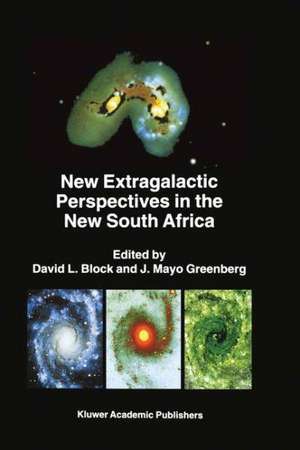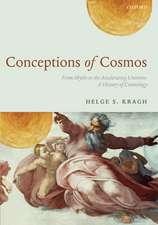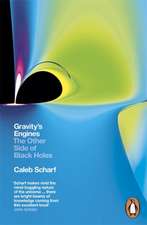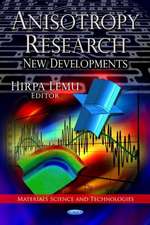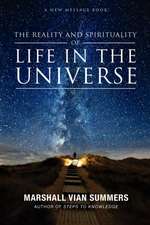New Extragalactic Perspectives in the New South Africa: Proceedings of the International Conference on “Cold Dust and Galaxy Morphology” held in Johannesburg, South Africa, January 22–26, 1996: Astrophysics and Space Science Library, cartea 209
Editat de David L. Block, J. Mayo Greenbergen Limba Engleză Paperback – 25 dec 2011
Din seria Astrophysics and Space Science Library
- 24%
 Preț: 799.10 lei
Preț: 799.10 lei - 15%
 Preț: 647.92 lei
Preț: 647.92 lei - 18%
 Preț: 983.81 lei
Preț: 983.81 lei - 18%
 Preț: 790.28 lei
Preț: 790.28 lei -
 Preț: 359.86 lei
Preț: 359.86 lei -
 Preț: 389.71 lei
Preț: 389.71 lei - 20%
 Preț: 691.14 lei
Preț: 691.14 lei - 20%
 Preț: 816.18 lei
Preț: 816.18 lei - 18%
 Preț: 1011.27 lei
Preț: 1011.27 lei -
 Preț: 402.56 lei
Preț: 402.56 lei - 15%
 Preț: 664.93 lei
Preț: 664.93 lei -
 Preț: 398.15 lei
Preț: 398.15 lei - 18%
 Preț: 954.77 lei
Preț: 954.77 lei -
 Preț: 411.04 lei
Preț: 411.04 lei - 18%
 Preț: 1225.31 lei
Preț: 1225.31 lei - 18%
 Preț: 1843.29 lei
Preț: 1843.29 lei -
 Preț: 393.13 lei
Preț: 393.13 lei -
 Preț: 400.26 lei
Preț: 400.26 lei - 18%
 Preț: 953.82 lei
Preț: 953.82 lei - 18%
 Preț: 960.61 lei
Preț: 960.61 lei -
 Preț: 398.35 lei
Preț: 398.35 lei -
 Preț: 390.84 lei
Preț: 390.84 lei -
 Preț: 413.76 lei
Preț: 413.76 lei -
 Preț: 416.64 lei
Preț: 416.64 lei - 18%
 Preț: 947.67 lei
Preț: 947.67 lei -
 Preț: 404.51 lei
Preț: 404.51 lei - 18%
 Preț: 956.50 lei
Preț: 956.50 lei -
 Preț: 403.75 lei
Preț: 403.75 lei - 18%
 Preț: 1229.40 lei
Preț: 1229.40 lei - 18%
 Preț: 1224.99 lei
Preț: 1224.99 lei -
 Preț: 404.29 lei
Preț: 404.29 lei - 15%
 Preț: 654.77 lei
Preț: 654.77 lei - 18%
 Preț: 1248.20 lei
Preț: 1248.20 lei - 18%
 Preț: 955.25 lei
Preț: 955.25 lei - 18%
 Preț: 1846.28 lei
Preț: 1846.28 lei - 18%
 Preț: 1233.06 lei
Preț: 1233.06 lei - 18%
 Preț: 1234.77 lei
Preț: 1234.77 lei
Preț: 410.07 lei
Nou
Puncte Express: 615
Preț estimativ în valută:
78.48€ • 81.63$ • 64.79£
78.48€ • 81.63$ • 64.79£
Carte tipărită la comandă
Livrare economică 14-28 aprilie
Preluare comenzi: 021 569.72.76
Specificații
ISBN-13: 9789401066372
ISBN-10: 940106637X
Pagini: 680
Ilustrații: XXIII, 653 p.
Dimensiuni: 160 x 240 x 36 mm
Greutate: 0.93 kg
Ediția:Softcover reprint of the original 1st ed. 1996
Editura: SPRINGER NETHERLANDS
Colecția Springer
Seria Astrophysics and Space Science Library
Locul publicării:Dordrecht, Netherlands
ISBN-10: 940106637X
Pagini: 680
Ilustrații: XXIII, 653 p.
Dimensiuni: 160 x 240 x 36 mm
Greutate: 0.93 kg
Ediția:Softcover reprint of the original 1st ed. 1996
Editura: SPRINGER NETHERLANDS
Colecția Springer
Seria Astrophysics and Space Science Library
Locul publicării:Dordrecht, Netherlands
Public țintă
ResearchCuprins
Changing perceptions of the morphology and dust content in galaxies.- How cold could galaxies be?.- Temperature fluctuations and very cold dust.- The interstellar medium as observed by COBE.- Molecular gas in spiral galaxies.- Cold dust signatures on SNR gamma ray spectra.- Optical and infrared images of galaxies: What’s to be learned?.- Optical, IR and HI observations of a large complete cluster sample.- The relationship between near IR extinction and CO emission.- Extinction and dust column density in spiral disks from FIR vs UV-Optical comparison.- The effects of supergiants on the infrared light distribution in galaxies.- Reflections at the Registration Desk.- Distribution and Content of dust in overlapping galaxy systems.- Evolution and emission of cold, warm and hot dust populations in diffuse and molecular clouds.- Organics and ices in galactic dust.- Studies of NIR dust absorption features in the nuclei of Active and IRAS galaxies.- Tiny grains and large molecules in the Milky Way and other galaxies.- The role of UV observations in understanding dust and its morphology.- Studies of interstellar dust and gas with the far ultraviolet cameras and far ultraviolet imaging spectrograph space shuttle investigations.- High spatial resolution 50 and 100 micron KAO observations of infrared-bright galaxies.- Infrared photometry and dust absorption in highly inclined spiral galaxies.- The nature of interstellar dust in Local Group galaxies from observations of extinction and polarization.- Structure in the distribution of the dust and its impact on extragalactic studies.- Determination of the 3D dust distribution in spiral galaxies.- A 3D dust model for the Sombrero galaxy.- Doubling of the infrared flux from NGC1068: a circumnuclear dust torus?.- Resolving the faintgalaxy excess with HST: Results from the Medium Deep Survey.- Spiral structure in galaxies: Competition and cooperation of gas and stars.- Color gradients in M99: Stellar populations or dust?.- Amplitude and shape of spiral arms in K'.- The bulge/disk connection in late-type spirals.- Dust in starburst galaxies: From the ultraviolet to the near infrared.- Near-infrared surface photometry of barred spiral galaxies.- Barred galaxies in the near-IR: Observations and dynamical implications.- Morphology and dynamics of a few giant galaxies with low surface brightness disks.- Secular evolution of galaxy morphologies.- Dusty disks and the structure of early-type galaxies.- Dust and gas in Local Group galaxies.- The nuclear regions of M31, M32 and M33 imaged by the Hubble Space Telescope.- Gas and dust in normal and active galaxies.- mm observations of IRAS galaxies: Dust properties, luminosity functions and contributions to the sub-mm background.- Mapping the cold dust in edge-on galaxies at 1.2mm wavelength.- Internal absorption in spiral galaxies using four colours.- Dust in galaxies: A far infrared perspective.- Search for cold molecular gas.- Galactic structure and morphology of the Milky Way from the TMGS.- Unveiling large-scale structures behind the Milky Way.- The distribution of dust and gas in elliptical galaxies.- The ionized gas in early-type galaxies.- HST imaging of the dust in kinematically distinct core ellipticals.- Dust and gas in the outer parts of galaxies.- Dust spectra of the Milky Way: Primordial molecular hydrogen and helium in the outer Galaxy.- Fundamental aspects of the ISM fractality.- The DM-HI connection.- Very cold gas and dark matter.- Constraints on the surface density of gas in outer galaxy disks from stability analyses.- The changing circumstellar environment of young stars.- Interstellar dust in the solar system.- Pre-stellar cores and the initial conditions for star formation.- Dust and Morphology of high redshift radio galaxies: Clues from scattering.- Dust obscured Quasars.- The opacity of low surface brightness galaxies and their contribution to Quasar absorption.- The morphology of massive, gas-rich low surface brightness galaxies.- 38 micron images of galaxies: The infrared luminosity.- Poster Papers.- Dust in early-type galaxies: New results on the wavelength dependence of the extinction.- New radiative transfer models of disc galaxies and the scale-length test for dust diagnostics.- The distribution of cold dust within the Galaxy.- Detection of extended dust in a radioquiet galaxy at redshift 2.38.- Extinction in the direction of the end-of-bar star formation region.- Sampling the bar population.- Chasing shadows in the TMGS.- Imaging the inner Galaxy.- Fabry-Perot imaging of dust grain processing in M82.- The HI content of a complete sample of Sa galaxies.- Massive galactic halos and dark matter: Unusual properties of neutrinos in the de Sitter Universe.- Dust in a radio galaxy at z=4.25.- Voyager observations of dust scattered starlight.- Dust and stars in the nuclear region of M51.- Gaseous and stellar responses to spiral perturbations detected in the NIR.- Attenuation and stellar population gradients in spiral galaxies.- FIR and CII emissions in NGC6946.- The composition of interstellar dust.- Dust in radio galaxies: Clues to activity.- Defining spiral structure in the flocculent galaxy NGC5055.- Where does dust absorb most light?.- On the angular-momentum transport in spiral and barred galaxies.- Dust, stars and nuclear activity in the centres of Sbc galaxies.- The polarizing properties of dust in NGC5128.- Concluding Thoughts.- Astronomy at the University of the Witwatersrand.- Eyes to the Future: An Interactive Panel/Audience Discussion.- Each Chairperson Reflects on their Session.- The Riddle.- ‘Where dust is stars’.- The Participants.- The Colour Plates.
